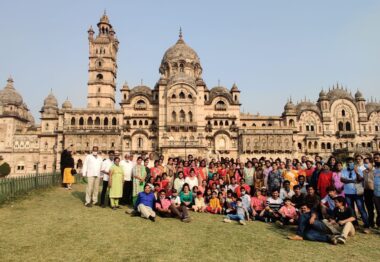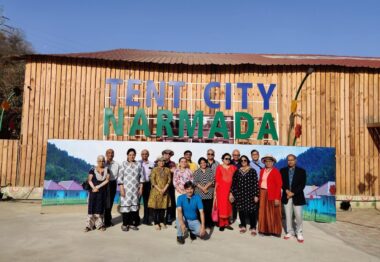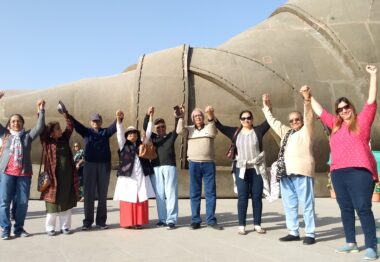Statue of Unity – The Statue of Unity is the world’s tallest statue with a height of 182 metres. A huge exhibition hall covering an area of 4,647 square metres has been set up in the pedestal of the Statue of Unity. The hall showcases the life of Sardar Patel, his contributions to the Freedom Movement against British rule and his role in the merger of princely states. The Shoolpaneshwar Wildlife Sanctuary, the life and culture of the tribal people of Gujarat and the Sardar Sarovar Dam are also displayed through an Audio-Visual show. The monument also boasts of a viewing gallery at 135m height at the chest of the statue with a capacity of 200 tourists at a given time. A Light and Sound show using laser technology projected on the Statue of Unity takes place every evening except Monday. The colourful laser lighting system is accompanied by an excellent narration of the history and life of Sardar Patel, his contribution to the Independence Movement and the unification of India as one nation.
Sardar Sarovar Dam – is one of the world’s largest concrete gravity dam which is 1.2 kms long and 163 mts hight from its deepest foundation level. It has 30 radial gates weighing about 450 tons each.
The Jungle Safari – covers 558,240 square metres on the right bank of the Narmada River, about 2 kilometer from the SoU. The park will be home to more than 400 species of fauna, covering various biomes of Africa, Australia, Asia and America. Visitors will also be able to spot India’s endangered species, which includes the magnificent big cats such as Asiatic lion, Royal Bengal Tiger and Leopard. The safari route has been designed such that the visitors can view animal activities, spot reptiles and watch birds.
The Cactus Garden – is a unique botanical garden at the Statue of Unity site, created to exhibit a huge variety of Cacti, the true miracles of adaptation. The thought behind the development of the cactus garden is to provide an experience of the desert ecosystem in the midst of a landmass well entrenched in an aquatic surroundings. There are 30000 plants of 350 species spread across 20 acres of land. A grand architectural greenhouse – ecological habitat of nearly 400 national and international species of cacti and succulent plants. These cacti and succulent species represent their origin in 17 countries of the world mainly from North & South America and African continents. Beautiful rockery showcasing distinct flora in its richness. Ravishing landscape of colourful cacti and succulent plants. Educational and learning opportunity for students and enthusiasts to explore the nature’s wisdom.
The Butterfly Garden – at Valley of Flowers amidst the Vindhyas and Satpura ranges, along the banks of Narmada, makes it an attractive spot to appreciate the assortment of these flying jewels. The garden harbours more than 80 species of butterflies. The garden will cover 6 acres of area with 150 species of plants and 38 species of butterflies. The park is host to more than 150 species of larval host plants and nectar plants to attract variety of butterfly species. Special care has been taken in the landscaping of the park to support the diversity of butterfly species. Walk through this beautifully designed park to get close view of stunning butterflies. Explore different butterfly species that inhabit the garden, Identify the plant species and learn about their unique features, also observe the preferences of each species for its specific nectar plant and larval host plant, and one can look for the species gathering around the puddling area and certain sap/alkaloid producing plants.
Laxmi Vilas Palace – is one of the most majestic structures in India and was the private residence of Maharaja Sayajirao Gaekwad III. Known to be the largest private dwelling of the size equivalent to four times of the Buckingham Palace, this magnificent palace is a must-visit when in Vadodara. was constructed in 1890 and took nearly twelve years to complete. Sprawling across an area of about 700 acres, it is still home to the royal family of Vadodara, the Gaekwads. It is built in the Indo-Saracenic style which is a hybrid of the Hindu, Gothic and Mughal architectural forms with the presence of domes, minarets and arches. The Laxmi Vilas Palace incorporates several other buildings within its complex including the LVP Banquets and Conventions, Moti Baug Palace and the Maharaja Fateh Singh Museum building. The museum building was mainly constructed as a school for the Maharaja’s children. Today, it houses an extraordinary collection of paintings by Raja Ravi Verma and various other artefacts gathered from all around the world.

















